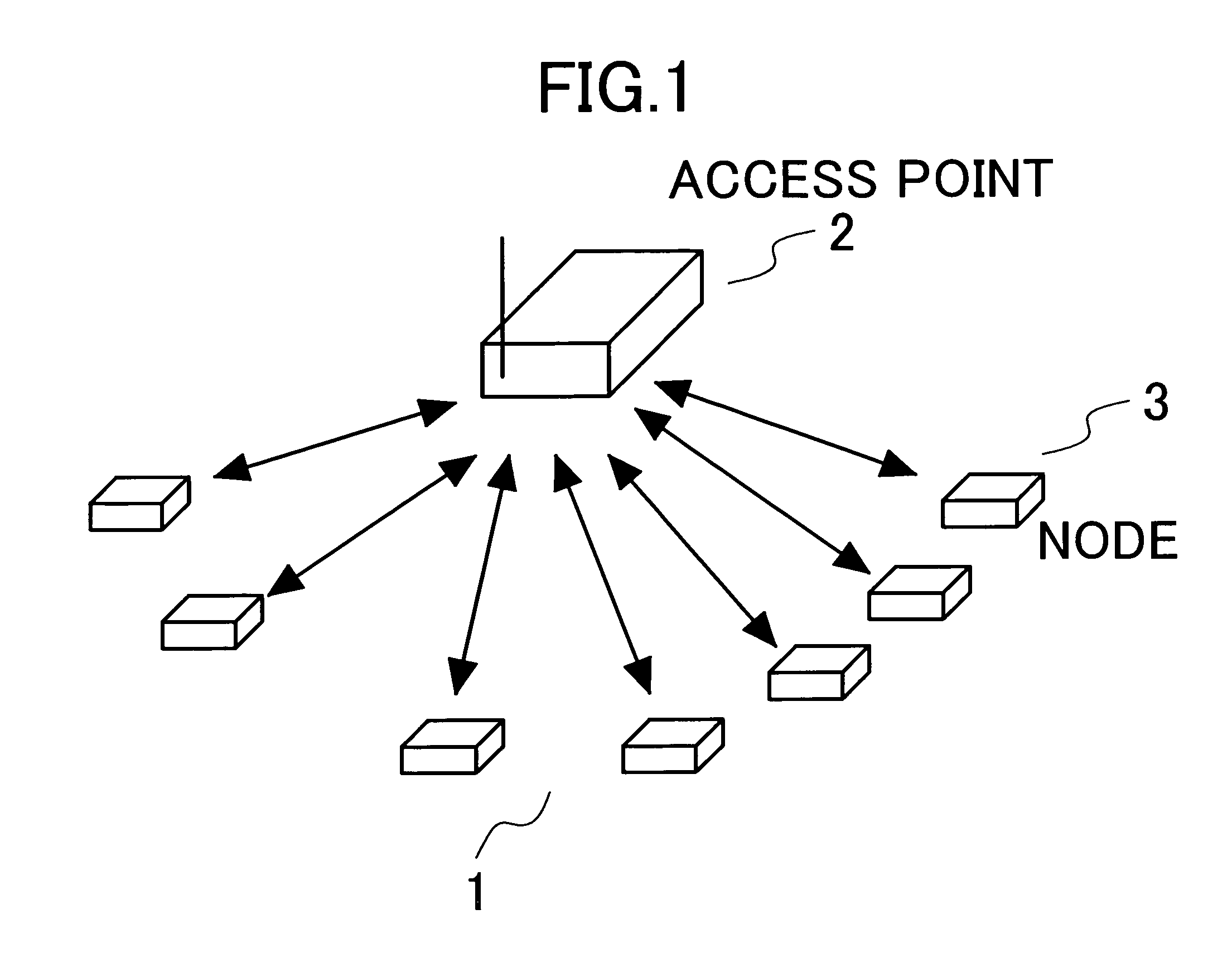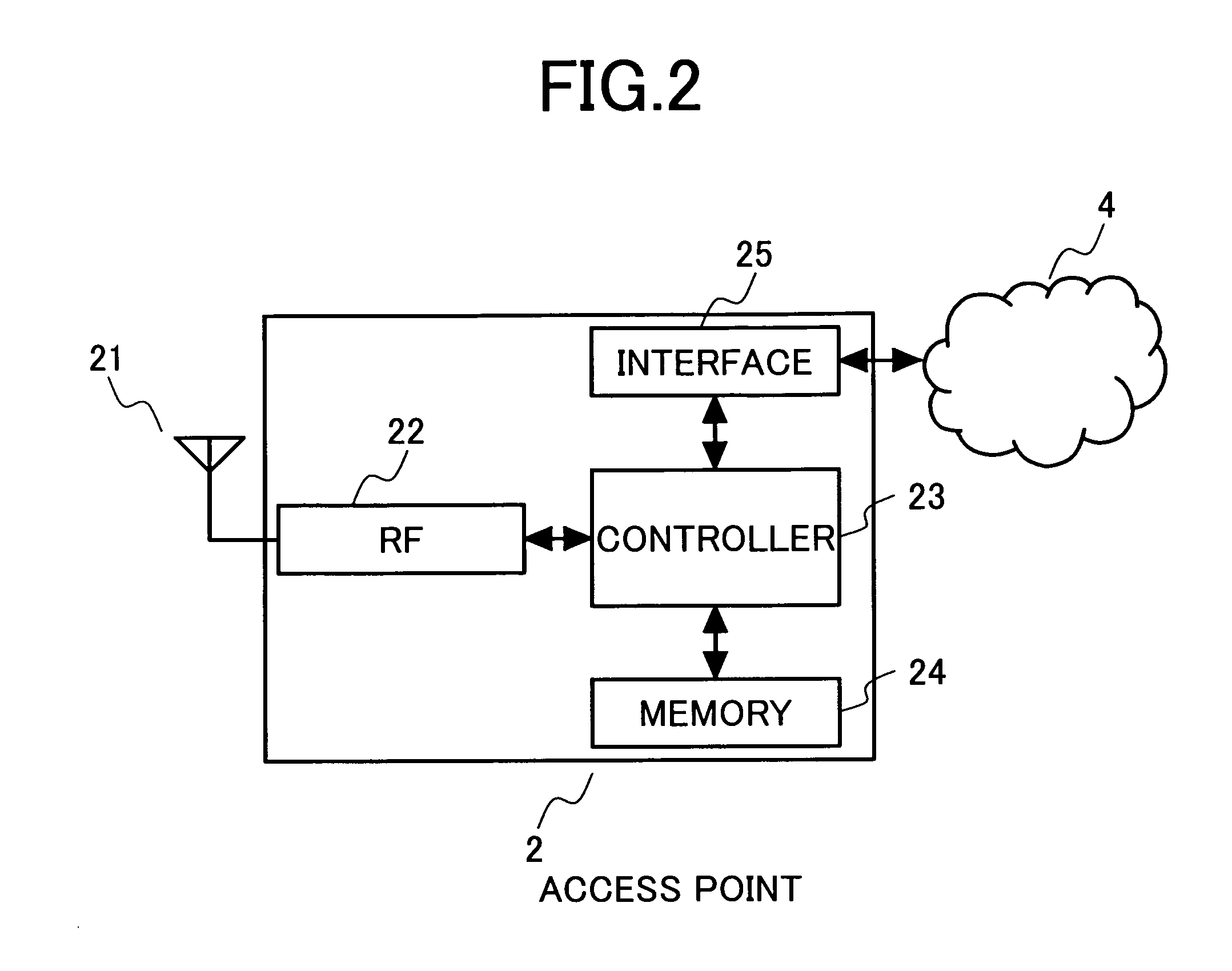Wireless communication systems
a communication system and wireless technology, applied in power management, sustainable buildings, high-level techniques, etc., to achieve the effect of reducing the electric power required and simplifying the power supply configuration and power supply control
- Summary
- Abstract
- Description
- Claims
- Application Information
AI Technical Summary
Benefits of technology
Problems solved by technology
Method used
Image
Examples
first embodiment
1. First Embodiment
[0037] In the following, the embodiments of the present invention will be explained using the figures. The configuration of the whole system is similar to that in FIG. 1, and the configurations of the terminal and the base station are as shown in FIG. 5 and FIG. 6, respectively.
[0038]FIG. 5 is a diagram showing the details of the wireless part of a terminal according to the present invention. The operation of transmitting and receiving is similar to that of the terminal shown in FIG. 3. The points of difference are the points of providing a power supply management part 100 and dividing the internal parts of the wireless part into circuit blocks 101 to 105 so as to be able to switch the supply destinations of the power supply depending on the operating conditions. By providing a power supply only to those circuit blocks, from among circuit blocks 101 to 105, which are minimally required in the operation of transmission, reception, and carrier sensing, respectively...
second embodiment
2. Second Embodiment
[0048] In the following, an explanation will be given, using the drawings, of another embodiment of the present invention. FIG. 10 is a diagram showing another example of an operating sequence of the terminal. FIG. 11 is a diagram showing another example of a procedure for wireless communication between a base station and a terminal. It is considered that one frequency is used in the present embodiment, base station 2 transmits the beacon signal periodically (P20), and that terminal 3 performs carrier sensing of the beacon signal (P20) of base station 2 and measures the signal strength of the received signal.
[0049] By taking the beacon signal (P20) transmitted by base station 2 and the timing of the carrier sensing of terminal 3 to have different periods, it is possible to capture the beacon signal (P20) of the base station by performing carrier sensing a number of times, in case base station 2 is present in the range within which communication with terminal 3 i...
PUM
 Login to View More
Login to View More Abstract
Description
Claims
Application Information
 Login to View More
Login to View More - R&D
- Intellectual Property
- Life Sciences
- Materials
- Tech Scout
- Unparalleled Data Quality
- Higher Quality Content
- 60% Fewer Hallucinations
Browse by: Latest US Patents, China's latest patents, Technical Efficacy Thesaurus, Application Domain, Technology Topic, Popular Technical Reports.
© 2025 PatSnap. All rights reserved.Legal|Privacy policy|Modern Slavery Act Transparency Statement|Sitemap|About US| Contact US: help@patsnap.com



